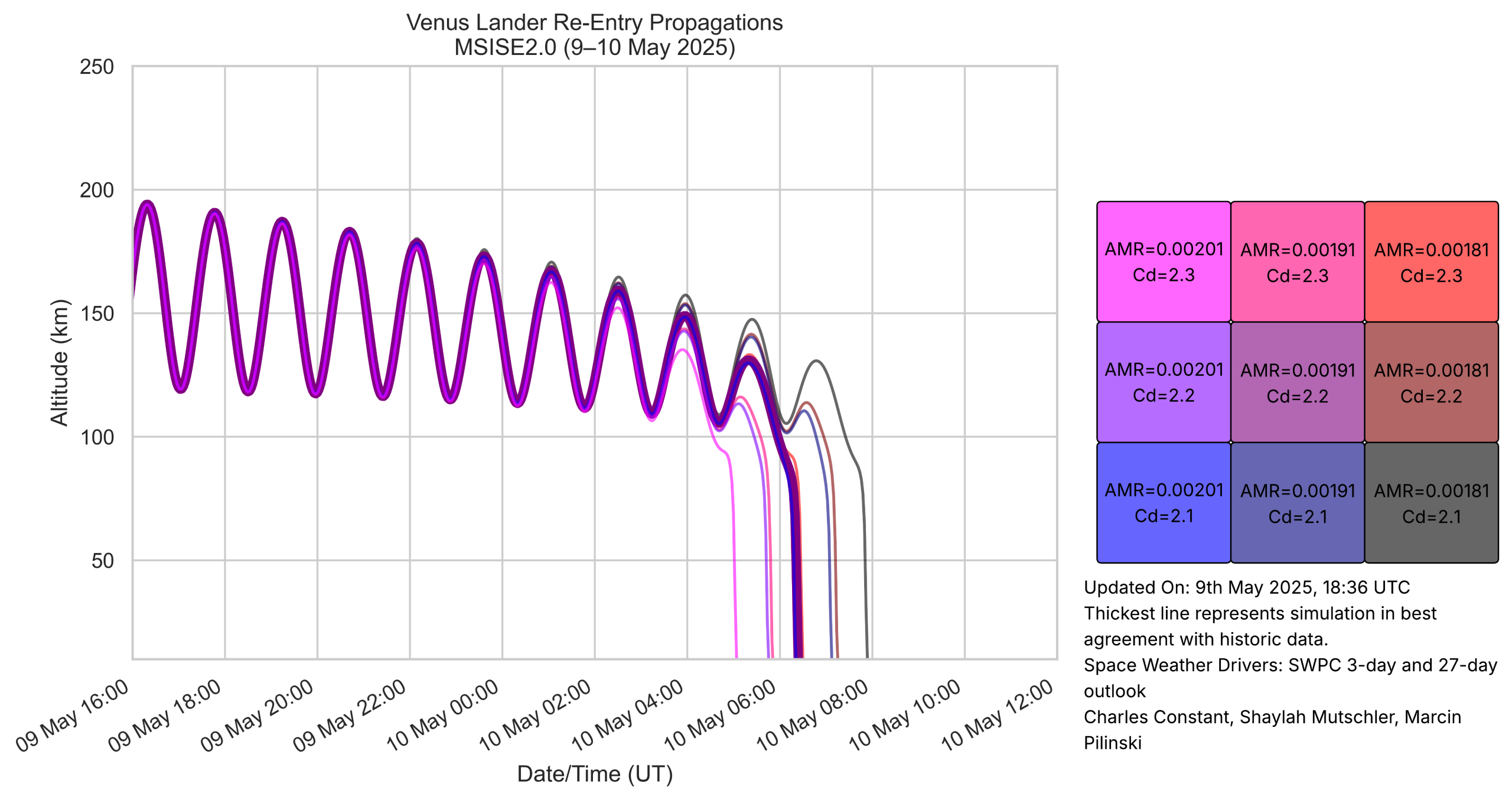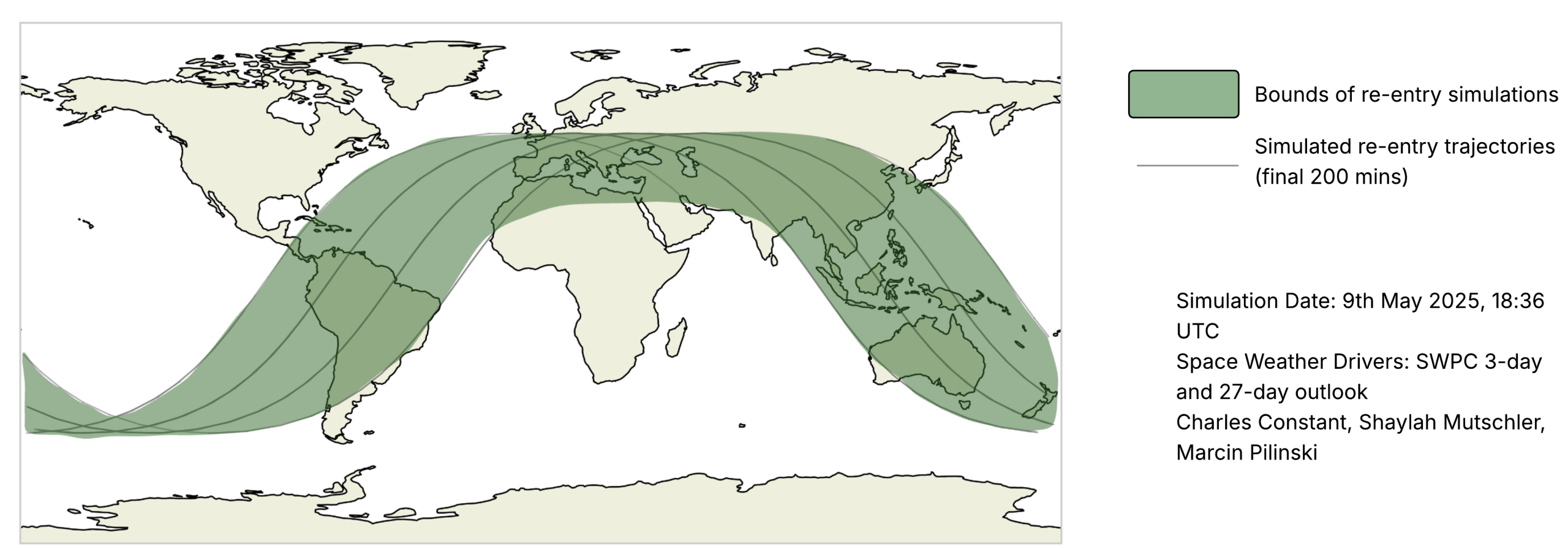
Soviet-Era Spacecraft Expected to Re-Enter Earth’s Atmosphere Intact Mid-May
BOULDER, COLORADO. A roughly 1-meter diameter, 495 kg descent capsule from the Soviet Union’s Kosmos 482 mission (part of the Venera program intended for Venus’s exploration) is projected to make an uncontrolled re-entry into Earth’s atmosphere around the 13th of May 2025 (± 3 days). Orbital decay analyses conducted utilizing a precise orbit propagator and the NRLMSISE-2.1 atmospheric density model driven by NOAA SWPC’s 27-day space weather forecasts, currently place the re-entry window between 10–16 May 2025.
Originally engineered to withstand extreme conditions (up to 300 g acceleration and 100 atmospheres pressure) during entry into Venus’ atmosphere, about 60 times denser than Earth’s. The capsule is likely to survive re-entry into Earth’s comparatively thin atmosphere. Consequently, this object poses an unusual and noteworthy risk compared to typical satellite debris, especially given the possibility it will re-enter over densely populated regions.
Launched in 1972, Kosmos 482 failed to escape Earth’s orbit and has since remained in a highly elliptical, slowly decaying orbit. Kosmos 482 has a well-characterized area-to-mass ratio and drag coefficient, enabling relatively precise orbital-decay modelling. Nevertheless, predicting the exact re-entry time and location is inherently challenging due to uncertainties in forecasts of the satellite drag environment, and precise figures will remain uncertain even until hours before the event.
Figure 1 Altitude time-series of the re-entry predictions as of May 9th 2025. The nominal drag coefficient and area to mass ratio are sampled within +/-5% and +/-20% respectively
Potential Risk Zone
Due to the spacecraft’s orbital inclination of 51.96°, the capsule’s re-entry will occur within a latitude band of ±51.96°, encompassing heavily populated regions across North America, Europe, Africa, Asia, and Oceania. Authorities and the public within these regions should remain aware of these events, although the likelihood of impact at any specific location remains very low.
Figure 2 Ground tracks of the predicted re-entry altitude time-series displayed in figure 1.
The renewed attention to this object was brought about by Marcin Pilinski from CU Boulder’s Laboratory for Atmospheric and Space Physics, with the detailed re-entry analysis carried out by Charles Constant (PhD candidate at University College London) and Shaylah Mutschler at Space Environment Technologies. Additional background research and historical context have been significantly informed by the work of Marco Langbroek. See “The Venera that stayed behind” (https://www.thespacereview.com/article/4384/1).



